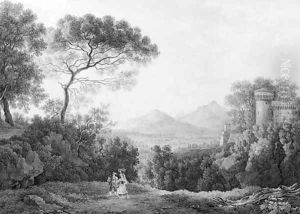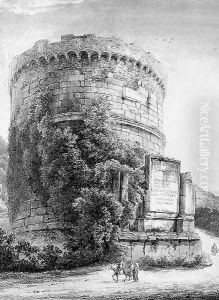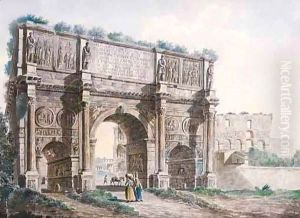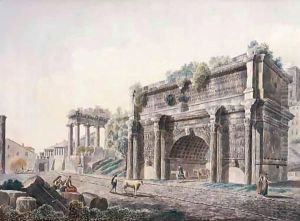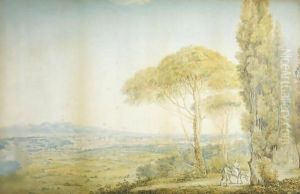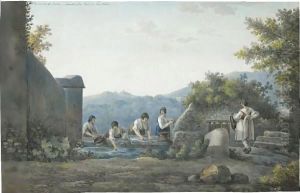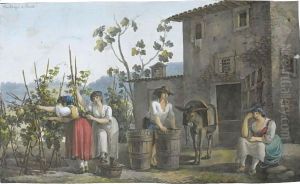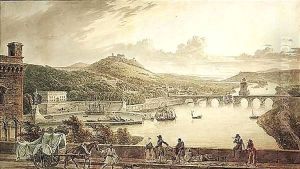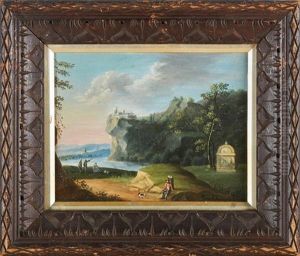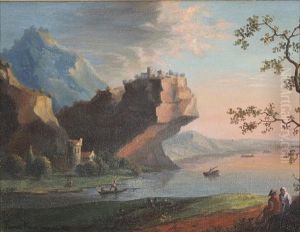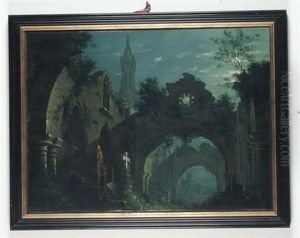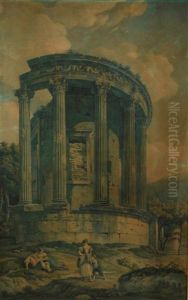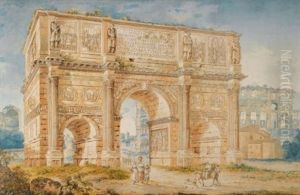Franz Kaisermann Paintings
Franz Kaisermann was a Swiss painter born in the city of Solothurn in 1765. Not much is known about his early life, but it is believed that he developed an interest in art at a young age. He eventually left Switzerland to pursue his artistic career in Italy, a common destination for artists of the period seeking inspiration from the Renaissance masters and the classical ruins of Rome.
Kaisermann arrived in Rome around the end of the 18th century, a time when the city was a hub for artists and intellectuals. He became part of the vibrant expatriate community there and was particularly influenced by the landscape painters working in and around Rome. His work primarily focused on landscapes, which were characterized by their detailed rendering and romantic atmosphere. Kaisermann's paintings often featured Italian countryside scenes, ruins, and pastoral settings that appealed to the sentiments of the European elite who desired picturesque views of Italy.
Throughout his career, Kaisermann enjoyed considerable success. His works were sought after by collectors and art patrons, which allowed him to sustain a comfortable lifestyle. He was particularly known for his watercolors, a medium in which he excelled, capturing the subtle variations of light and shade in the Italian landscape. Kaisermann's work was part of the larger trend of the 'vedute' paintings, which were realistic scenic views that became popular as souvenirs for travelers undertaking the Grand Tour of Europe.
Kaisermann continued to live and work in Italy for the rest of his life. He witnessed the turbulent times of the Napoleonic Wars and the subsequent changes they brought to Europe, but it is not clear how much these events influenced his work directly. Franz Kaisermann passed away in 1833 in Rome. His legacy as a skilled landscape painter remains, and his works can be found in various art collections and museums, providing a window into the picturesque Italian scenery as seen through the eyes of a Swiss artist in the late 18th and early 19th centuries.
